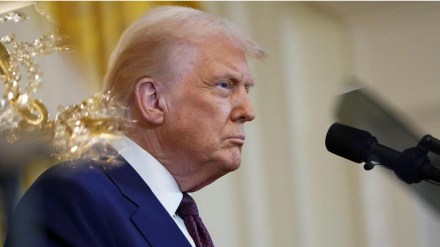US President Donald Trump’s 26 per cent reciprocal tariff on imports from India brings with it a downside risk of 30-60bps to growth estimate of 6.5 per cent for FY26 from both from the direct and indirect channels, stated a Morgan Stanley analysis. “We see downside risk of 30-60bps to our growth estimate of 6.5 per cent for FY26. Monetary policy will remain supportive of growth, we expect a change in stance to accommodative and 25bps rate cut in April policy,” said Upasana Chachra, Chief India Economist, Morgan Stanley.
The United States on Friday clarified that the reciprocal tariff to apply on India effective April 9 will be 26 per cent, instead of the widely reported rate of 27 per cent. Donald Trump, while announcing the tariffs to be imposed on its trading partners, had stated that the levy imposed on India was half of what India charged the US, i.e. 52 per cent, factoring in trade and non-trade barriers and currency adjustments. A blanket tariff of a minimum 10 per cent has been imposed on all countries. Across goods, energy and pharmaceuticals are exempted from tariffs, while tariffs on automobiles are kept at 25 per cent for all countries.
Likely implications of Trump tariff
Morgan Stanley elaborated on downside risks to India’s growth both from the direct and indirect channels. “While the tariffs exceed our estimates for India, on a relative basis, these are at par/lower than other key competing economies. With goods exports to the US at 2.1 per cent of GDP (total) and 1.7 per cent of GDP (excluding energy and pharma which are exempt from tariff hikes), the direct impact will likely be less severe. However, a slowdown in US growth and weak global trade momentum will impact external demand,” the brokerage firm said.
More importantly, Morgan Stanley added, the impact is expected to be more pronounced through the indirect channel of weaker corporate confidence, which will dent the risk appetite and further defer the capex cycle. “As such, we see downside risk of 30-60bps to our growth estimate of 6.5 per cent for FY26. The impending trade deal with the US remains key to monitor, in our view, the implementation of which by the fall of 2025 could help reduce the downside risk from the direct impact of higher tariffs,” Upasana Chachra maintained.
Further policy support required
Against this backdrop, the Reserve Bank of India (RBI) is expected to cut rates by 25 bps. Per the analysis report, the central bank will also be required to change its stance to accommodative in the policy review on April 9th, on the back of an uncertain external demand environment. “Further, on the back of downside risks to growth we see risk of a deeper rate easing cycle, with additional rate cuts of 50-75ps (vs base case of 75bps rate cut) as the RBI will likely need to support domestic demand,” Upasana Chachra said, while maintaining that policy makes are expected to pause fiscal consolidation and increase capex spending to support domestic demand.
